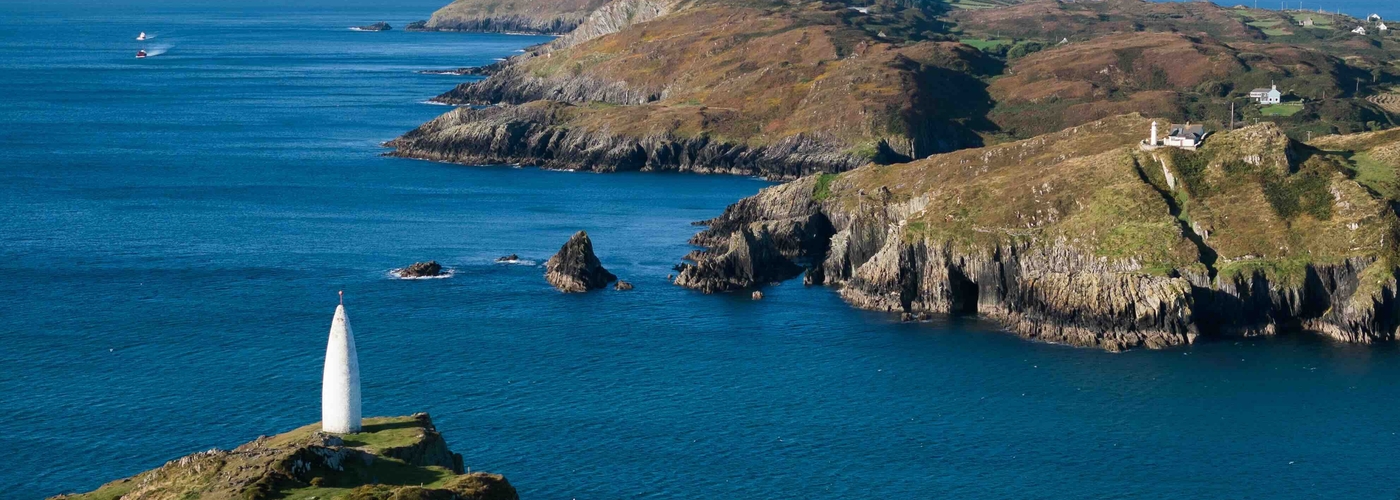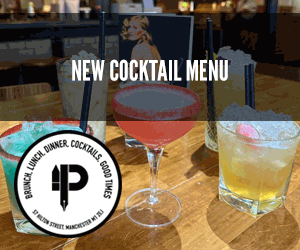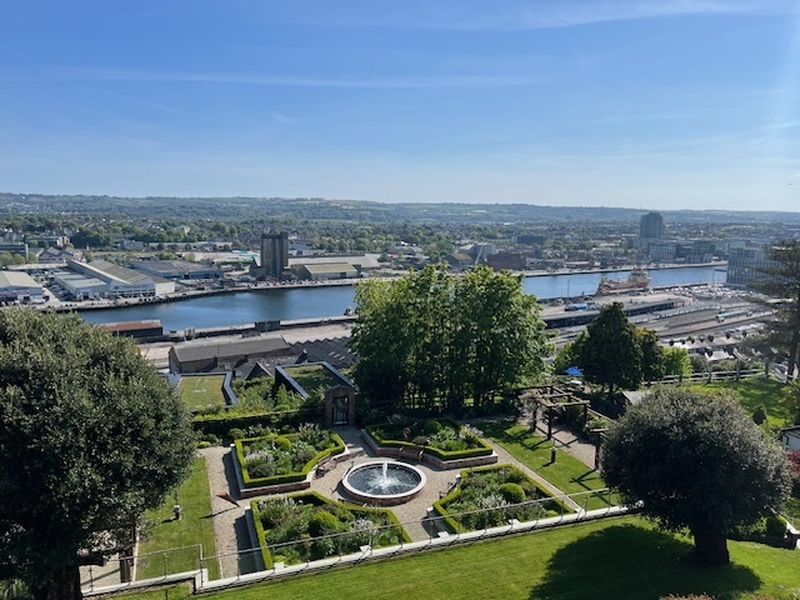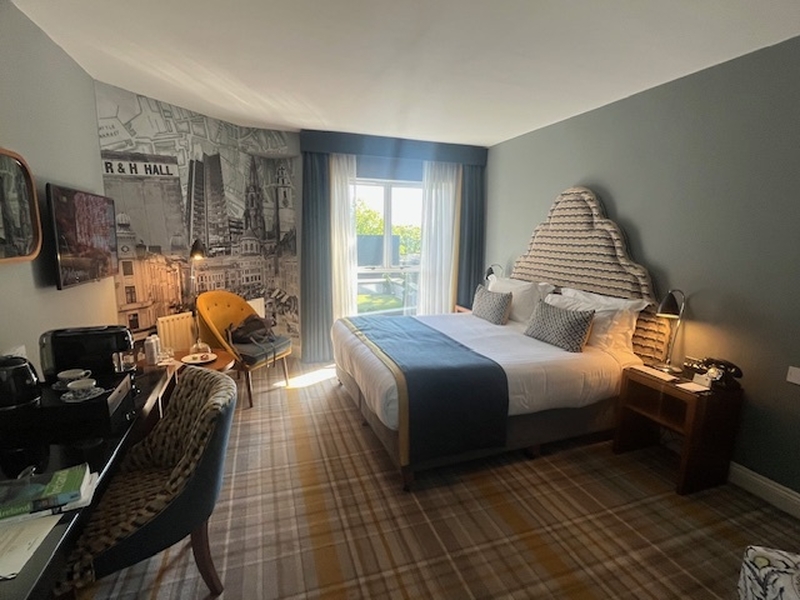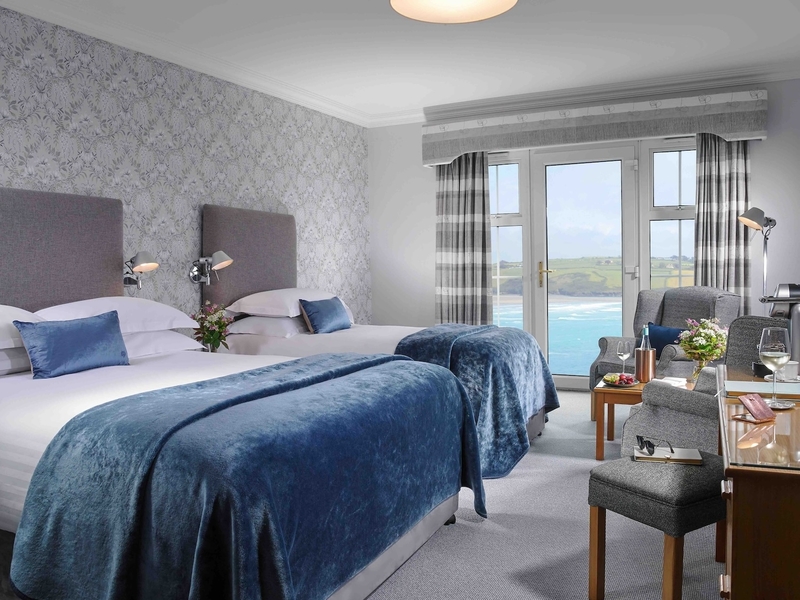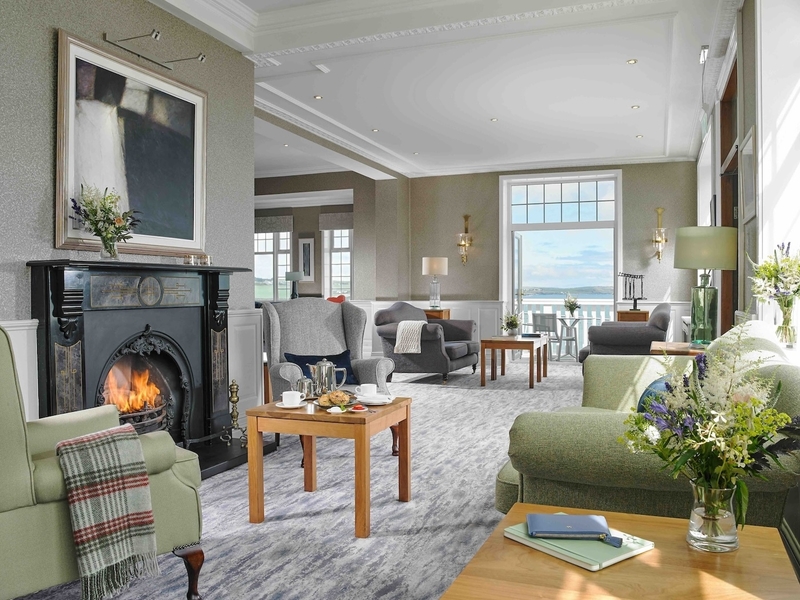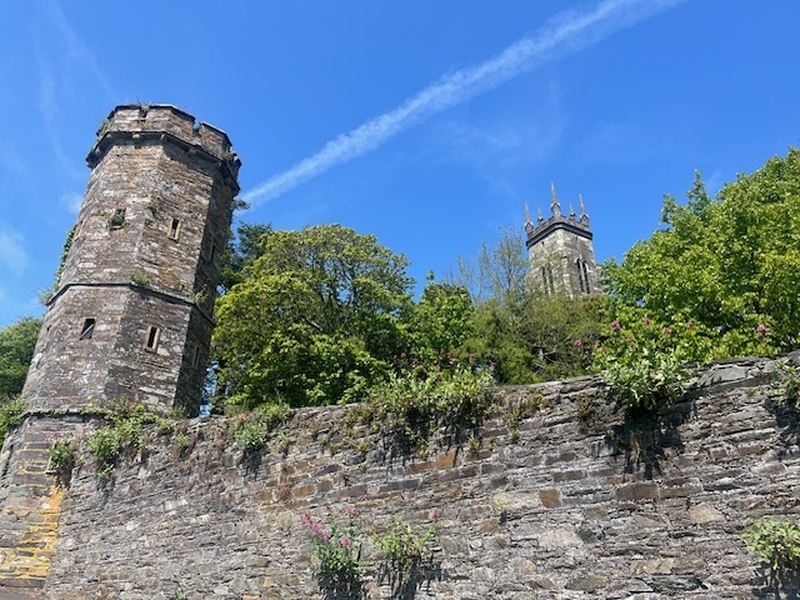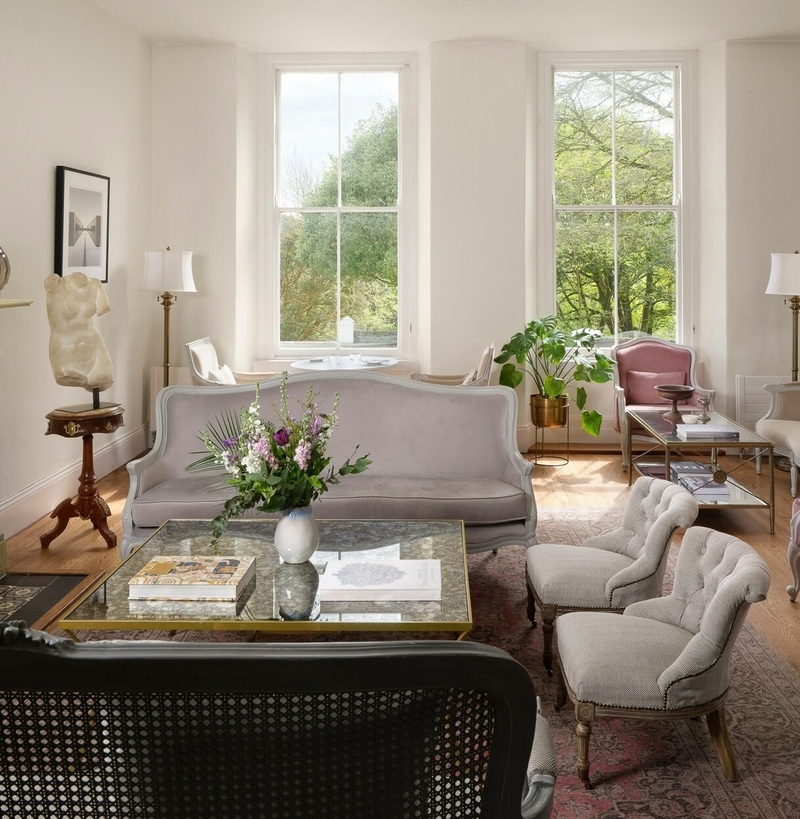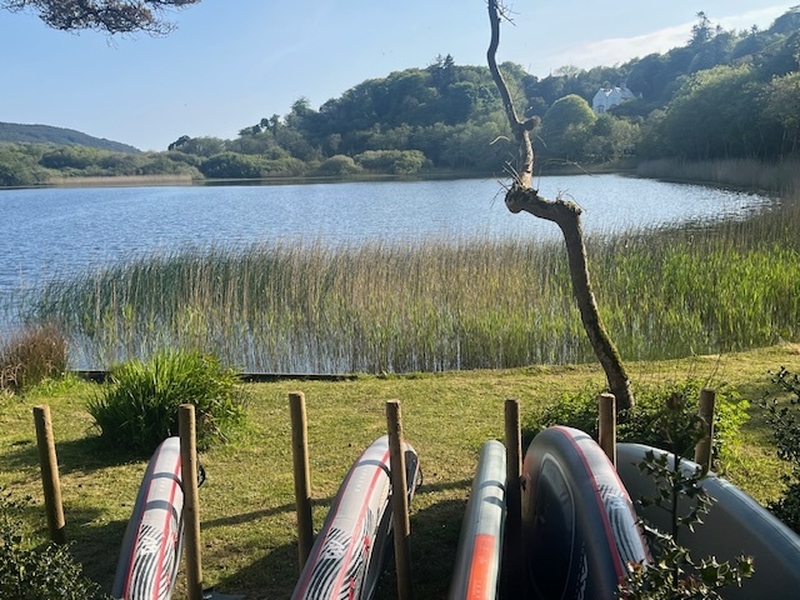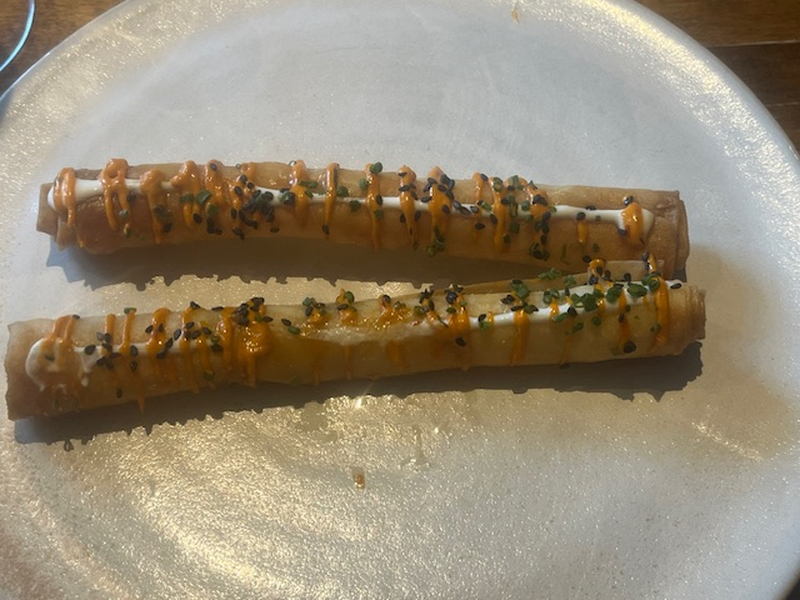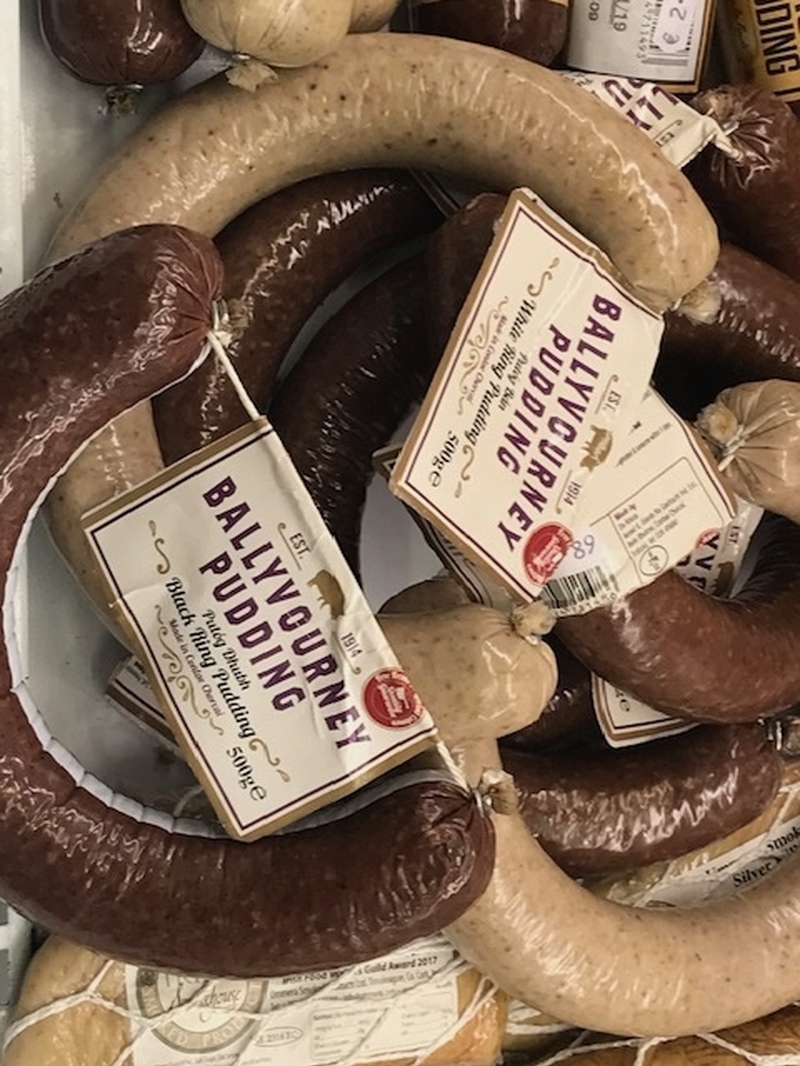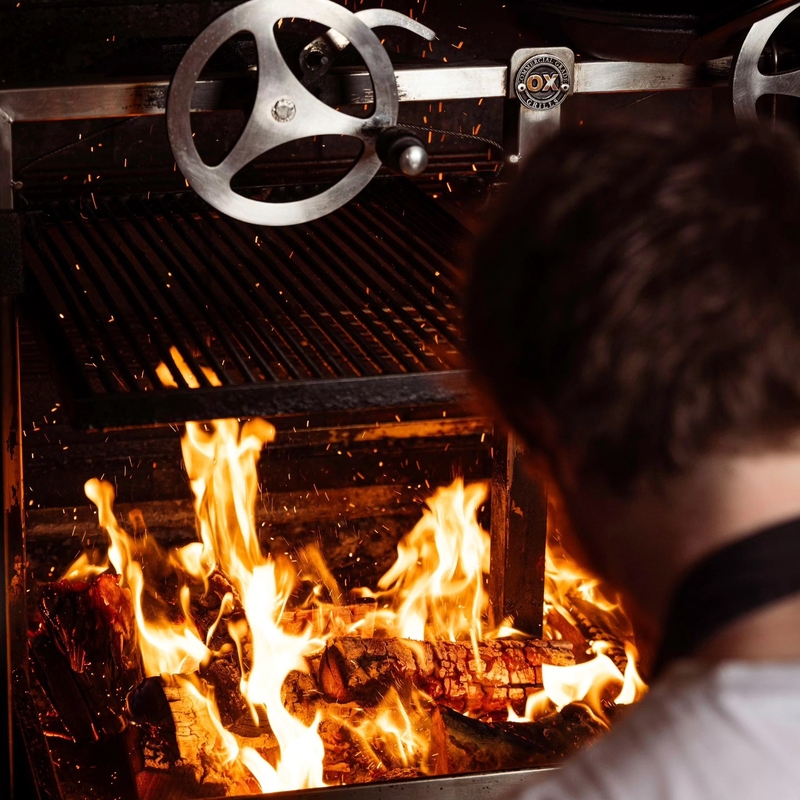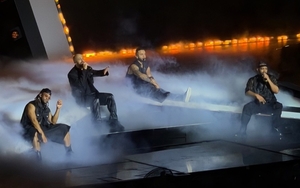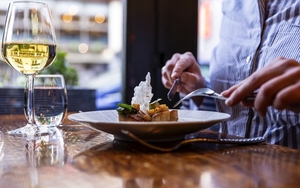Local specialities? Neil Sowerby can’t get enough in this glorious corner of Ireland
WHAT better launch pad for an adventure than a luxury lodging with a view? A cocktail served on the terrace, a bracelet of lights spangling the city below. We’re up in exotic sounding Montenotte, named after a Napoleonic victory in Italy in 1796.
Baltimore lost most of its population when pirates from Algiers stormed it back in 1631. The victims spent the rest of their lives as galley slaves or locked up in the Sultan’s harem
Like neighbouring suburb Tivoli this was Cork’s Beverley Hills in the 19th century. A hilltop where the ‘Merchant Princes’ built their mansions in full sight of the cargo coming into harbour that made their fortunes.
Among the grandest was what became the Cork Country Club Hotel, famous for a rooftop U2 photoshoot in 1980, which was used on the cover of their U218 greatest hits album and the book U2 by U2. It has upped its game since becoming the Montenotte Hotel in 2006. Expensive refurbs have consolidated its status as one of the ‘Small Luxury Hotels of the World’.
Below its gorgeous six acre tiered garden with scattered sculptures there’s a new accommodation addition – treehouse-inspired woodland retreats. All part of an eclectic and playful vibe, which we loved.
It all felt a haven after a dawn start, three hours’ drive to Holyhead, a crossing to Dublin on Irish Ferries’ state-of-the-art Swift vessel, then a further three hours, mostly on the M8, down to Cork city. Just the start of a peregrination around West Cork taking in some remarkable food and hospitality, a unique ‘Sky Garden’ and a tinier ferry ride to the southernmost inhabited part of Ireland.
The temptation that first night was to stay in and eat in the hotel’s Panorama restaurant, but we had a very special engagement down among the bustling craic of Oliver Plunkett Street. No, not the ‘Notorious’ Frisky Whiskey Bar. Another time perhaps. Goldie is one of Ireland’s most talked about restaurants. It has won a Michelin Bib Gourmand on the back of young chef Aishling Moore’s commitment to ‘gill-to-fin’ cooking. That means a daily menu dependent on whatever is brought in to Ballycotton quayside. No part of the catch to be wasted, in particular those fish previously thrown back. Treatments are global and powerful.
If that sounds a mite daunting fret not. Inside the unassuming interior each plate we tried was pleasure and there are signature dishes you are likely to encounter. I’d recommend hake tail schnitzel with gherkin and celeriac remoulade and soy cured egg yolk or the John Dory with chicken and butter miso sauce. Plus Cork-born Aishling’s talent is not just for fish cooking. Witness the caramelised white chocolate, Achill Island sea salt, milk sorbet, with a buckwheat tuile.
To reach Goldie it’s just a 10 minute walk down from the Montenotte; be warned the return journey is a calf-stretcher. You might need that restorative ‘Merchant Prince cocktail of Montenotte Gin, French rosé, strawberry purée, lemon juice, egg white, rose perfume atomiser spray.
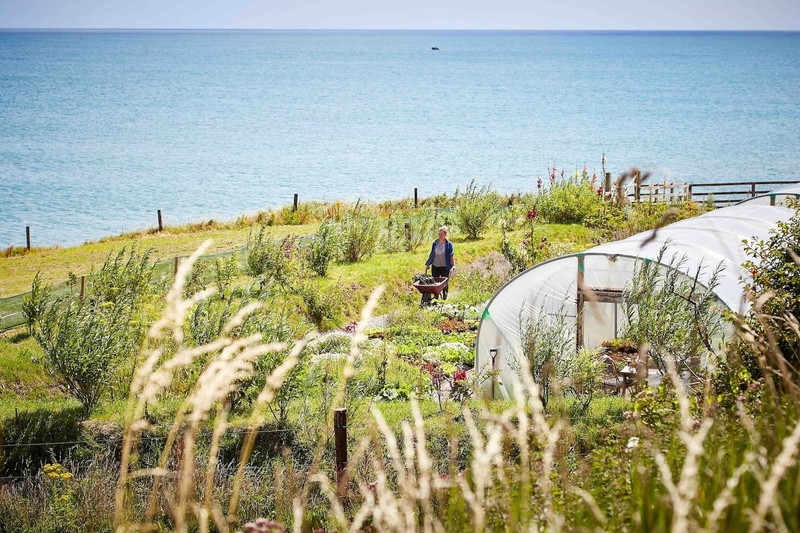
Dunmore House – Skeaghanore duck, first strawberries and spuds of the season
I have a soft spot for the snaking estuarine coastline around Timoleague and Courtmacsherry, an hour south of Cork city. Soft as in “it’s a soft day” – ie persistent drizzle. On this six-day Irish jaunt we saw only blue skies. It was quite bizarre. Not that it had brought out the crowds to either settlement. What a sense of away from it all, having the ruins of Timoleague Abbey all to ourselves. The Franciscans founded it in 1240 on a much older monastic site. Much older is relative in these parts. Drombeg Stone Circle half an hour to the west dates back some 3,000 years to the Stone Age. 16 of its 17 stones are still standing; the horizontal stone or Druid’s Altar is aligned with the setting sun of the midwinter solstice and may have been used for human sacrifice.
Close by, outside Rosscarbery is one of Ireland’s most evocative ruins. Spoiler alert for the timid: Coppinger’s Court is only reached by single track lane and then you can only gaze across a private field at this four storey skeleton. Built in 1616 for Sir Walter Coppinger, it was regarded as one of the great Irish fortified houses with, it is said, “a chimney for every month, a door for every week and a window for every day of the year.” It never recovered from being stormed and torched during the 1641 Irish Rebellion. This corner of Ireland is full of such poignant reminders of a troubled past. Some nearer our own tine.

Take Clonakilty, the next town on our route. It trades off its reputation for Clonakilty Black Pudding (ubiquitous at breakfast in these parts) but for students of Irish history it means just one thing – Michael Collins, hero in the struggle for Irish independence. Liam Neeson in the movie. There’s quite a homage hereabouts. Visit the Michael Collins Birthplace at Woodfield, where he spent his childhood. Shortly before the great revolutionary was ambushed and killed in 1922 the cottage was burnt down, then later rebuilt and is now a National Monument. For a fuller over-view of the ‘Big Fella’ visit the Michael Collins Centre 5km east of Clonakilty and in the town proper the Michael Collins House.
South of Clonakilty lie some glorious beaches. Many are in quiet coves such as Duneen. The pick, though, is on an epic scale – Inchydoney, regularly rated Ireland’s favourite strand. Parking along a smart one-way system is free. Dip your toes, blow the cobwebs off, fly a kite, dribble ice cream down your chin.

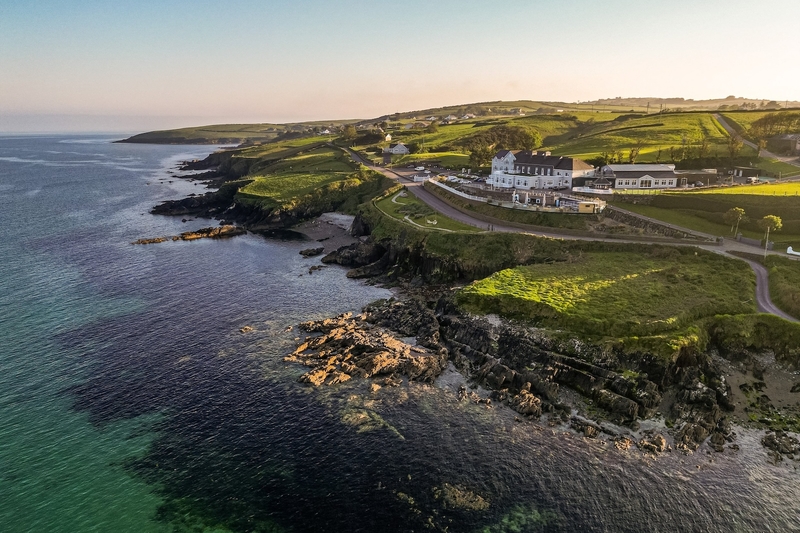
Gaze across Clonakilty Bay and you can just see our next hotel, Dunmore House. Flags for Ireland, Cork and the EU flutter above the great white house on a curving headland. It has been in the same family’s hands for 90 years and a hotel since 1948. It is currently run by Peter Barratt and his parents Richard and Carol. She’s a force of nature on the Irish hospitality scene, greeting us warmly as she consummately juggled a busy afternoon of two weddings and a funeral party coinciding. We followed our hotel arrival regimen of a couple of Guinnesses and white wines in the lounge and happily people watched. The view from our first floor room also engaged us – out across the choppy sea.
Dunmore’s ‘Adrift’ was named Ireland’s 2024 Hotel Restaurant of the Year, beating the likes of Ballymaloe and Ashford Castle. Add the presence of arguably the best organic garden I’ve seen at a hotel and Carol’s list of trusted long-term suppliers and dinner promised much. It delivered. As at Goldie, fish figured impressively, here finer cuts more traditionally sauced and accompanied by the new Irish spuds of our dreams. Afterwards there could be only one pudding choice. Sweet with a tinge of acidity. Only the previous day Bushby’s of Rosscarbery. had delivered the first strawberries of the season. Local is everything. The star of the whole dinner was my wife’s starter of Skeagahnore confit duck from a farm up by Ballydehob. We seriously considered smuggling a pack or two back on the ferry.
Liss Ard with its mysterious ‘Sky Garden’; Skibbereen, Baltimore and Cape Clear
For the short run down to Skibbereen we tried to stay as close to the coast as we could. There are some attractive stop-offs along the way – Union Hall, where Dunmore sources its turbot and shellfish, Glandore, where pleasure craft bob in the inlet, and picture perfect little Rosscarberry on its hill. In the sixth century it was a centre of learning, famous across Europe, known as Ross Ailithir (‘Wood of the Pilgrims’). Since at least the 10th century the site has hosted a cathedral. Today, firmly Protestant, it is Ireland’s smallest.
12 miles south west, is another Church of Ireland outpost in that bastion of the Anglo Irish Ascendancy, Castletownshend. Drive down a steep street of Georgian houses (avoiding the two sycamores bang in the middle half way down. Park up before the quayside runs out and walk up to St Barrahane’s on its strategic bluff.
The atmospheric graveyard hosts the final resting place of the 19th century female literary duo known as Somerville and Ross. Edith Somerville, born in 1858, lived well into the 20th century, a veteran huntswoman and church organist for 70 years. Outside this enclave, after the 1916 Easter Rising, the Ireland of her youth changed utterly. As WB Yeats wrote: “A terrible beauty is born.”

Contemporary with Somerville, Liss Ard Estate, is an imposing Relais & Chateaux property outside Skibbereen. Back in 1853 when the Anglo-Irish O’Donovans built it the demesne stretched to 3,000 acres and today it’s a not unimpressive 200 acres of walkable woodland, encompassing a reed-fringed lake with spa cabins and Lake House accommodation separate from the Georgian style main hotel. Our bedroom was in a less spectacular, separate stable block, but it was handy for the unique feature of this Relais – the Irish Sky Garden.
This was created for then Swiss owners by the American sculptor James Turrell in the Nineties. Reached via a dark tunnel, it’s an elliptical crater of grassed over earth and stone, measuring 50 by 25m. Above it only sky, which you gaze at from a sarcophagus-like granite plinth, designed for two people to lie, feet to feet, the acoustics deadening any sounds from outside. The installation’s inspiration is clearly ancient Irish ring forts with maybe Mayan and Egyptian influences. Visitors can book online to experience it during daylight hours. As residents we could creep back at midnight. Alas, clouds stifled the expected canopy of stars and our granite bed now had real chill about it. In the retreat to bed redemption came in the form of a rare encounter with… a hedgehog.

This was all after a fine dinner, where Skeaghanore duck made a reappearance, in the basement dining room, surprisingly casual in a house that defines grandeur.
Poignant contrasts again next morning as we stood in the Abbeystrewry Famine Graveyard by the River Ilen. In the midst of what seems a typical Irish cemetery with its Celtic crosses there’s a large patch of bare grass, beneath which lies a mass grave, pits containing up to 10,000 victims of the Great Hunger. Many buried at night for the shame families felt.
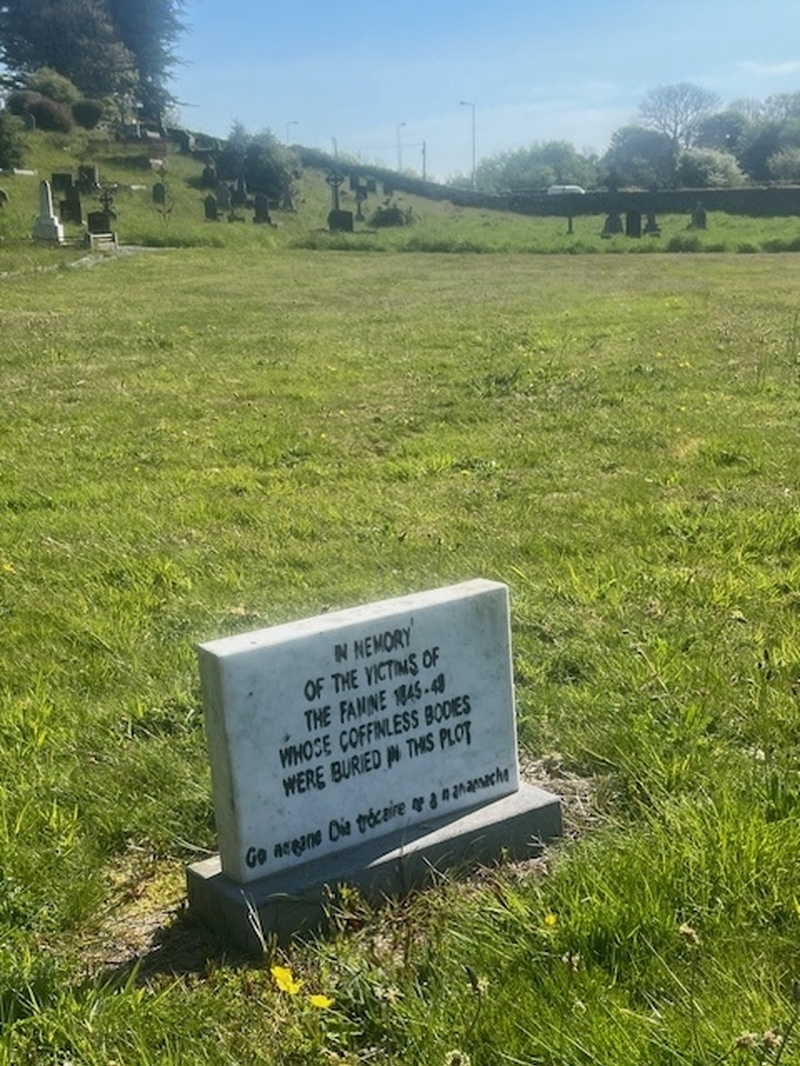
Minutes earlier we had been revelling in the culinary bounty of Skibbereen’s must-visit Saturday Farmer’s Market. The story of that terrible period, 1845 to 1852 when the potato crop failed and a million Irish perished, is graphically explored at the Skibbereen Heritage Centre. Such was the desperation to avoid starvation the town’s inhabitants were known as ‘Donkey Eaters’. Clonakilty was dubbed ‘Clonakiklty, God Help Us’.
Our next port of call, Baltimore, lost most of its population to a different scourge, when pirates from Algiers stormed it back in 1631. The victims spent the rest of their lives as galley slaves or locked up in the Sultan’s harem.
Today this beautiful town has been ‘conquered’ by a Turkish chef, the remarkable Ahmed Dede, who swiftly gained two Michelin stars for his eponymous restaurant in the Customs House. A tasting menu dinner at Dede will set you back 190 euros with a wine pairing that can double that sum. You can sample this yoking of prime Irish ingredients, filtered though his culinary heritage, at a fraction of the price at Baba’de in a converted mews around the corner. Which we did, wonderfully, under the watchful eye of his business partner, Maria Archer. Yes another Irish hospitality force of nature. Not to be missed: the langoustine spring rolls.
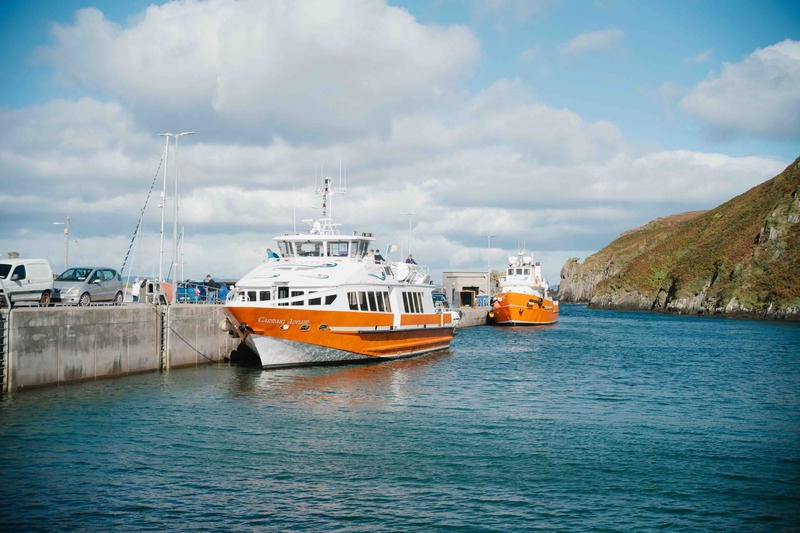
Our dinner there was a fitting end to another long sunny day, on Cape Clear Island, a 45 minute ferry ride away from Baltimore harbour. The £20 return ride is worth it just for sea life spotting – in our case dolphins and seals – and the 2½ sq mile island is a mecca for bird watchers.
It’s a great place to brush up your Gaelic at summer schools, apparently. Many of the 150-strong permanent population speak it.
Neighbouring island Sherkin is even smaller with just the one pub. Cape Clear has two. I’d recommend Cotters which has a garden overlooking North Harbour, where the boat docks. Walk on and you’ll drop down to South Harbour. The two bays nearly split the island into two.
I’d recommend walking up the steep road to the northern headland. Archetypal West Cork scenery with stunning views across to the mainland. Stop off at Cléire Goats visitor farm for a lavender (it grows profusely) ice cream or, better still, one of their terrific goat burgers.
Savouring Cork city’s food culture at the English Market and Elbow Lane
Completing our road trip was the gentlest of culture shocks. Cork may be more hectic than of yore but it still feels of a piece with its hinterland. We were cossetted by staying this time at The River Lee Hotel, with its great location, just a few minutes stroll along the riverside from everywhere, yet offering a plethora of leisure, spa and dining facilities. Ultra-modern, yet the floor to ceiling window of our favourite room of the trip overlooked a hillside that was pure traditional Cork.
Like everywhere we stayed, great attention was paid to the produce the hotel served. The Grill Room restaurant sources its oysters and fish of the day from Ballycotton, its beef from family-run butchers Quiqley’s and Michael Twomey. Oh, and naturally the duck breast was from Skeaghanore.
The foodie must-visit in Cork remains the English Market. The Protestant (or English) corporation established it in 1788; when Irish Catholic representatives took control of the city in 1840 they created a separate Irish Market. In decline, the English Market was narrowly saved form demolition in the Seventies, then was restored after a fire in 1980, after which the foodie adventure began.
Artisan traders, some with a European background, sold cheeses, olives and street food alongside traditional market operators providing fish, white and black pudding and, of course, offal. For tripe and drisheen (sheep’s blood-based black pudding) seek out the O’Reillys, while Pauline Noonan is your lass for crubeens (pig’s trotter) and bodice (cured pork rib).
Eat in? Ascend to the Farmgate Cafe to share a chowder and ciabatta perhaps or organic asparagus risotto. Posh? This is Cork; tripe and onions, with drisheen is also on the menu.
If steaks are your bag book (definitely book) a table or counter space at Goldie’s sister establishment, Elbow Lane Brew and Smokehouse, where Aishling Moore first learned her kitchen chops. It’s handily across the street and is also home to a splendid micro brewery. Alongside your flame-grilled T-bone order yourself a tasting flight. I recommend the Angel Stout, easily the equal of Guinness’s Cork rivals, Murphy’s and Beamish. To close, an amazing fact for you. Across six days we never drank in a pub. An Irish first for us. I did grab a cheeky Guinness on the ferry home though…
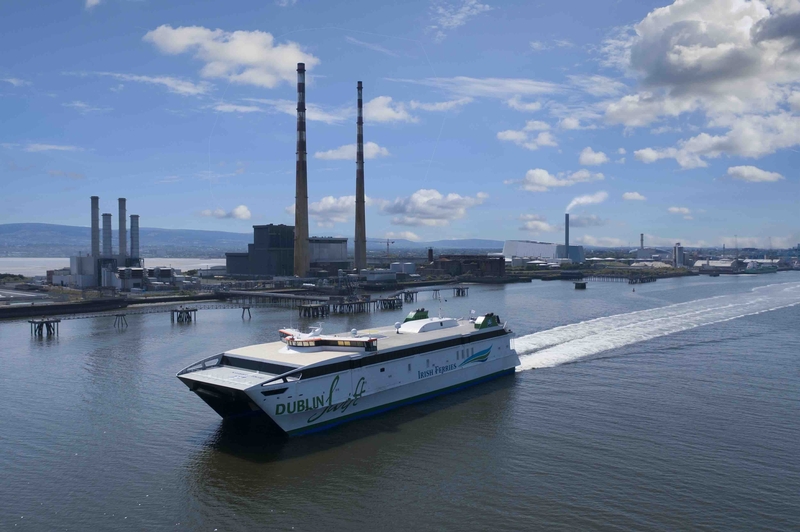
Swift by name – Irish Ferries’ fastest Irish Sea crossing
Irish Ferries offer short break return fares to Ireland from £214. We took the Dublin Swift, a high speed catamaran which travels from Holyhead to Dublin in just 135 minutes, making it the fastest Irish Sea crossing. It’s the best ferry experience we can recall with a highly efficient boarding process for our car at either end. To be admired too Irish Ferries’ quest for greater sustainability; the Swift has transitioned to using Hydrotreated Vegetable Oil, a fossil-free biofuel, as an alternative to conventional diesel.
Highly recommended for this trip is an upgrade to Club Class from £18 per person. It includes priority vehicle boarding, an executive lounge bar (get there early to snap up a panoramic window seat), free wifi, complimentary soft drinks and snacks (and wines on the Irish Sea and Dover-Calais routes).
If you fancy a full meal check out Boylan’s Brasserie, which offers a range from a Full Irish Breakfast at 16.95 euros to mains at 21 euros.
Fact file
On this trip Neil stayed at four hotels, all rated four star.
The Montenotte Hotel, Middle Glanmire Road, Montenotte, Cork, T23 E9DX, Ireland. +353 21 453 0050. 113 guest rooms. We stayed in the main house, handy for the swimming pool, spa, cinema and cocktails at the separate Clubhouse.
Dunmore House, Muckross, Dunmore, Clonakilty, Co. Cork. +353 23 883 3352. 30 guest rooms.
Liss Ard Estate, Castletownsend Rd, Russagh, Skibbereen, Co. Cork. +353 28 40000. Relais & Chateaux, Ireland’s Blue Book. 26 guest rooms.
The River Lee Hotel, Western Road, The Lough, Cork, T12 X2AH, Ireland. +353 21 425 2700. 182 guest rooms.
For tourist information go to Visit Irelandand Pure Cork.





